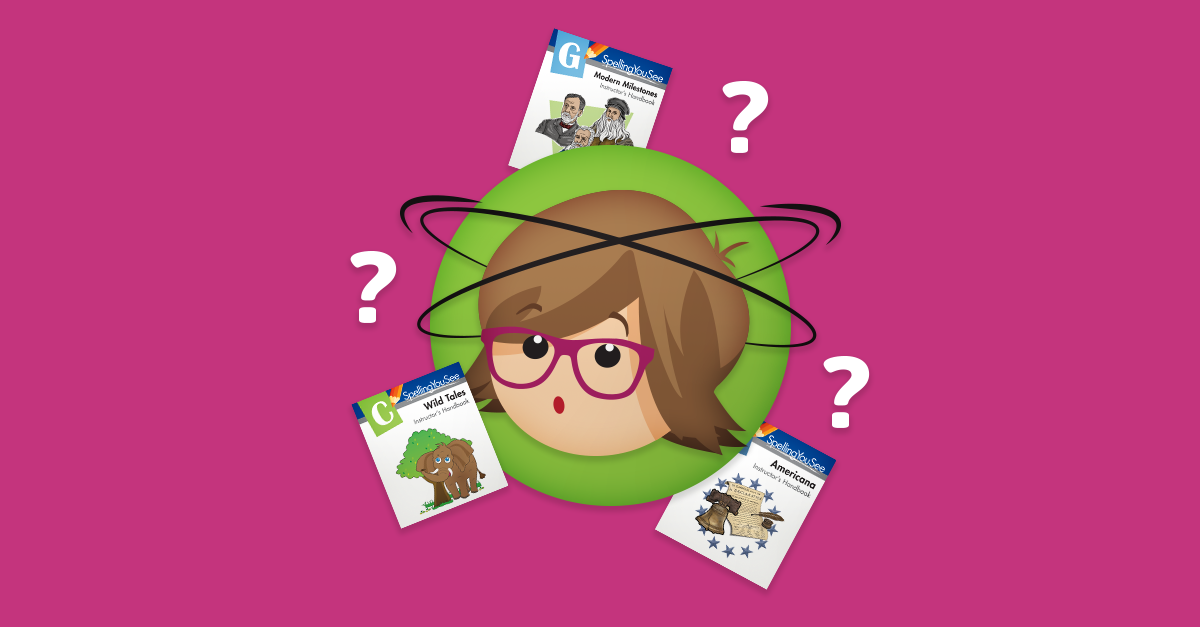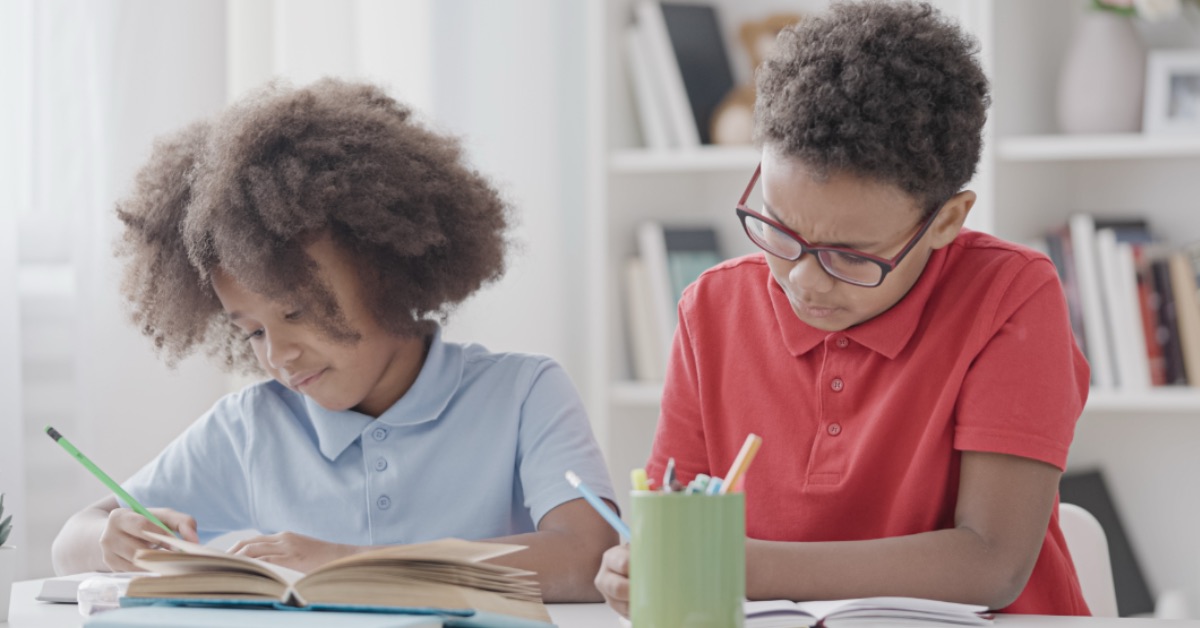
When Spelling You See was published, I was an early adopter. Being a brand-new representative to Demme Learning and a longtime homeschool mom, I wanted to familiarize myself with the program by working through it with my children. They had been guinea pigs for many of my other academic endeavors.
I pulled out the materials, and after the placement testing, we marched forward. At that point in time, I did not yet have the benefit of viewing Dr. Holinga’s video that modeled for me how to present the materials. This seemed like a straightforward process. You chunk, you do copywork, and you do dictation twice a week. Got it.
Regretfully, I did not read carefully the reasoning behind each task, or the implications of doing them incorrectly. In that sense, I am very much like the fellow who doesn’t consult the directions for putting something together, until it doesn’t go together as he has planned.
3 Key Elements of Spelling You See
1) Chunking
Chunking was a very straightforward proposition and having worked with a child who struggled to learn to read, it made perfect sense to me.
2) Copywork
Now THAT made perfect sense to me. When I was in high school, my honors level English teacher insisted that we do copywork daily. We had a “Reader’s Journal” that had multiple passages to copy. We all hated it, but interestingly enough, all of us, 30 plus years later, are competent spellers.
3) Dictation
Now here is the meat of the matter for me. I did not fully embrace the technique of dictation for several weeks of Spelling You See work. You see, being the mother of six, I am the poster child for multitasking, so I thought I could effectively administer a word-for-word dictation while doing another task, say, making dinner. The dictation tasks were a frustration for us both because I did not catch misspellings as they occurred. Fortunately, when I heard Dr. Holinga speak at a conference, I understood I had been going about it all wrong. Resolved to mend my ways, I went home with a fresh and more effective approach.
Please allow my mistakes to be your insight.
6 Tips for Using Spelling You See Effectively
1) The Instructor Handbook is NOT Optional
Take the time to read it. All of it. I learned a great deal from the Instructor Handbook and was much more effective with the time I spent with my two boys once I had done that. I refer back to them all the time, even now.
2) Use the Lesson Modeling
Having the lessons modeled for me was SO helpful. The instructional video that models how to implement the lessons with each level was such an essential piece for me. Watch the video. In fact, watch it more than once. Watch it again after you have worked with the materials for a week or two. You will learn more – I promise.
3) This is Different
Recognize that Spelling You See is different from anything you have done with spelling in the past!
It was not until we were several weeks into the program that I realized what a negative enterprise teaching spelling the traditional way can be. Think about this for one minute. You practice a list, test on said list, and then focus your energies on everything you have done wrong. It is all about the wrong and very little about the right – unless you are gifted with a child who has a natural ability for spelling and does well all the time. This is the first time I have engaged my children in a spelling proposition that has no downside to it. It is fun, and the progress they are making is exciting! They actually WANT to do spelling! (I felt like I should apologize to my adult children for the torture I put them through.)
4) This is a Process
When learning any skill that involves several capacities, the last place you really see the effectiveness of the program is in your student’s composition assignments. Dr. Holinga speaks eloquently to this issue. Consider ALL the components that make up a composition assignment for a student, everything from idea generation to just holding the pencil correctly. The expectation of seeing perfect spelling in composition drafts will likely come to fruition when the student has almost completed the Skill Development stage.
5) Do It Right the First Time
Read the passage to your child. Read the passage WITH your child. We are all natural editors, and boys are the BEST at this. They change words; they think articles are optional and adjectives are substitutional! There is tremendous benefit in reading to them and reading WITH them.
6) Do the Diction Correctly
Do dictation without distractions. Dictation is supposed to be a word at a time, with you prompting and guiding word by word. Keep it positive. Be affirming, and watch them as they write. Celebrate what they spell correctly and give them a high five. Reward them for progress. Remember, this is like building muscle memory. It takes time. Be their best encourager.
What do I think of Spelling You See now? I think it is the most fantastic academic enterprise in which I have ever engaged my children. To see them become excited because their spelling is improving has been so tremendously gratifying. To see my older son, who is diagnosed with dyslexia, develop a spelling competency gives me a humbling sense of joy. To hear him say he wants to continue to use the program because he knows it makes a difference – well, that has been worth more than gold to me.
Take the Spelling You See placement test today and discover the right level to support your child’s spelling journey!




We are in our first year of spelling you see with my two youngest kids. These insights you shared are valuable, thank you. I will keep them in mind as we go forward. I never learned to spell as a child with the standard lists and test. I taught myself as an adult basically using this method minus the chunking.
Thank you for this. We did SUS A in first grade. Next year finances were tight and I switched to All About Spelling. We started floundering when he was asked to master sounding out think/thank, and a few weeks into this year (3rd grade), with a son who had decided that he was a terrible speller like Ramona Quimby, I coughed up the money for SUS B. He has made progress and gained confidence, but I confess I haven’t made him repeat the nursery rhymes with me and gone through all the steps faithfully all the time. We only have 4 weeks left this year, but I will look up those videos you mentioned, and next year in Wild Tales, I’ll try to dig in and get us solidly on track.